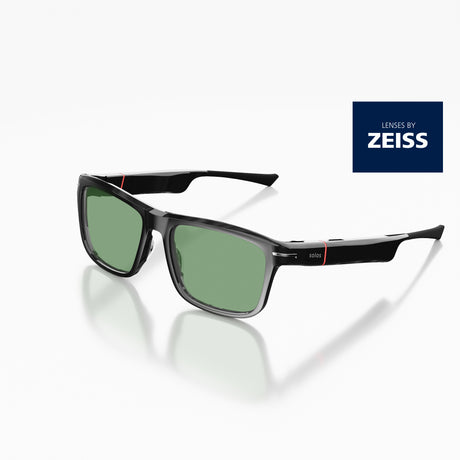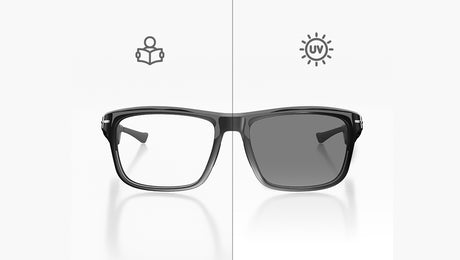Dr. John C.C. Fan, Founder, Chairman, CEO and President of Kopin Corporation.
GETTY
It’s no secret that augmented reality (AR) and virtual reality (VR) are trending in the tech community. With the metaverse hype on the rise, it’s no wonder this hot topic of AR/VR is emerging across multiple industries.
As our world is entering a turbulent and yet exciting period, we are likely to see major adjustments to the tech side of things. With so many products on the market, it can become quite overwhelming to understand the difference and benefits of each AR/VR application, especially when it’s a vital platform, taking you on a journey into the digital world.
The Difference Between AR And VR
Oftentimes, we hear AR and VR associated with one another. And we begin to see both technologies bleed into each application. But what is really the difference between the two terms?
I like to think that the biggest difference between the two is that AR adds a digital layer to reality, whereas VR completely replaces reality, creating a fantasy world. Both applications are very powerful and have the ability to greatly affect the way we interact as a society, from work to pleasure, but it’s important to know what successful applications of AR/VR look like and where the future market is headed. Ultimately, AR and VR will converge to MR (mixed reality), which is, perhaps, the best platform.
Tips For Successful AR/VR Experiences
1. Always remember that human-centric wearables are a must.
The first rule is that the human comes first, technology second. Humans, by nature, do not want to wear things on their heads. Therefore, the benefits of AR/VR have to be real and substantial to encourage them to keep it on.
2. Offer lightweight and comfortable headsets.
While the technology side of things is important when it comes to AR/VR/MR headsets, the comfort of the device is just as important. As a professional in the wearable technology space, I know how critical it is that users are able to wear the device for extended periods without any discomfort. This is the case for any individual who needs to wear glasses as well. If the headsets are bulky and give users a headache during use, mainstream adoption and success will be lost, no matter how impressive the tech side of things is.
3. Aim for crystal clear images with an “emperor seat” sensation.
Current AR/VR/MR headsets feature about 2K by 2K pixels, but for a truly realistic experience, the industry needs to get to the next level by evoking the “emperor seat” feeling of an IMAX theater by enhancing headsets to 4K by 4K resolution and perhaps even to 8K. By upgrading the AR/VR headsets to 8K, the headsets will take users to a personal “other-world” digital experience with imagery and a screen to match the size of an IMAX theater—unlike any other AR/VR headset.
4. Make clear the difference between what’s real and what’s not.
With some of the best AR/VR headsets, it is easy to mix up what is real and what is part of the “fantasy-reality” world. AR/VR experiences are meant to be positive ones, so it’s important for anyone using an AR/VR application to understand the cognitive impacts and realize that physical worlds and digital worlds could be indistinguishable.
The Future Of AR/VR
As we look to the future of AR/VR, we’ll see a huge demand for tiny displays with a big picture—or, what I like to call the secret recipe to a powerful consumer metaverse. To achieve this effect, the right optics are needed to magnify tens of thousands of times while maintaining great images.
Actually, optics challenges are now manageable. But for a powerful display, this is where the industry needs help. In order to offer the best user experience with AR/VR/MR applications, the big players will need to adopt the idea of silicon-based displays. Silicon allows you to achieve 4K displays in a compact size (1.3” diagonal) and operate at high frame rates, so there is never any motion lag with the user experience. Silicon also allows for lower power consumption and thermal management.
All are very important factors when considering an AR/VR/MR headset. As the founder of Kopin Corporation, I’ve learned the power of silicon firsthand. When tasked with developing defense products for the military, we needed to make sure soldiers could wear a headset for extended periods of time with no lag or dizziness.
It’s clear that we’re at the cusp of a major transformation. And I predict this transformation will and must happen. This transformation will take us from the dominant handheld world of smartphones to the hands-free realm of glasses and headsets. During this time, we will see the big players, like Apple and Meta, race to the finish line of this transformative period. This is where the idea of mixed reality comes into play—a hybrid reality, if you will.
With MR applications, we will see the physical world and digital world collide in big ways as we enter the metaverse era in full force.
Source: Forbes.com


































